Porsche rarely delivers a vehicle that doesn’t gel with its driver. And it’s the same with its sports trucks, the new Cayenne S impressing with its broad abilities. Porsche makes great sports cars but it’s the trucks that keep the lights on in Zuffenhausen-Stuttgart. While most buy them as luxury conveyances, Porsche agonises over the Cayenne to ensure it delivers dynamically.
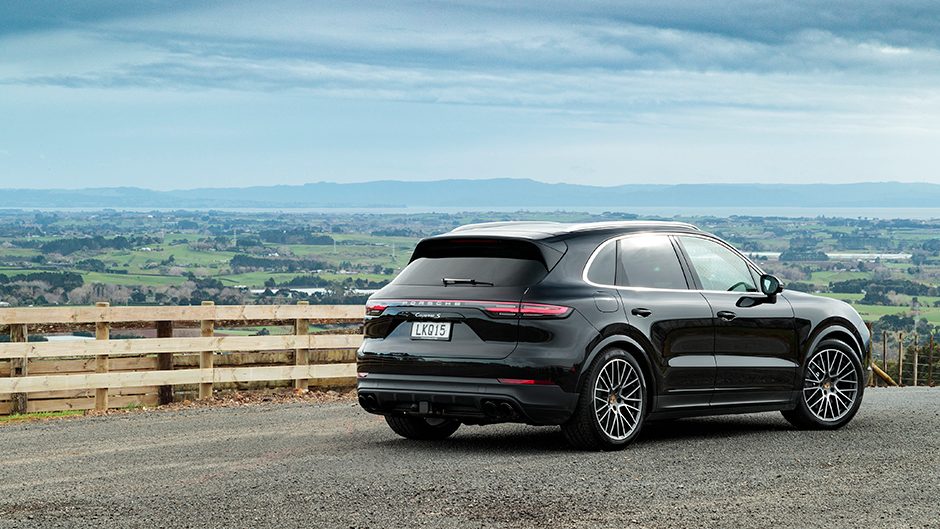
And this 2100kg luxo SUV aced all the bends on our usual drive loop of doom from the tight tyre squealers to the bumpy off-camber curves to the long sweepers. It rocketed through everything we pointed its sharper looking nose at. It’s the complete package, as you’d hope for the $187k written on the label.
Cayenne first launched in 2002 to groans from the faithful, but the firm has since sold 770,000 and it now enters its third generation. This uses the VW Group’s so-called MLBevo chassis as a basis, but all the bolt-ons are Porsche-ified to ensure the Cayenne really hums. The styling concept remains similar but the front end is tidier, the rear more attractive too, and the glasshouse is slimmer. While the wheelbase remains the same, the tracks are out and it’s a little longer and lower.
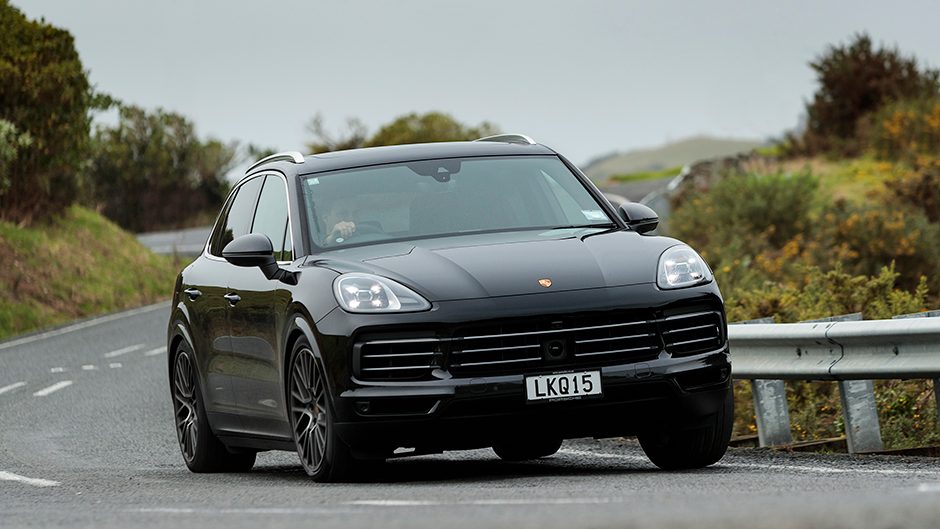
There are three models (and a hybrid on the way), Cayenne with a turbo 3.0-litre V6 flowing 250kW and 450Nm, the S with a bi-turbo 2.9-litre and 325kW with 550Nm while the Turbo fronts with a 4.0-litre V8 making 404kW and 770Nm. We drove the intermediate S variant, its V6 with the turbos nestled in the valley for a more compact unit sitting lower in the bay.
This arrangement also improves the throttle response. The twin-scroll turbos marry to an exhaust manifold that is integrated within the cylinder head and so is water cooled for added efficiency. Said engine has a sporty V6 burble which turns to a rasping growl under load, but it isn’t overly rowdy. The torque flows quickly, low-end lag all but non-existent and the power builds rapidly from 2500rpm when gassed, spinning freely to 6800rpm.
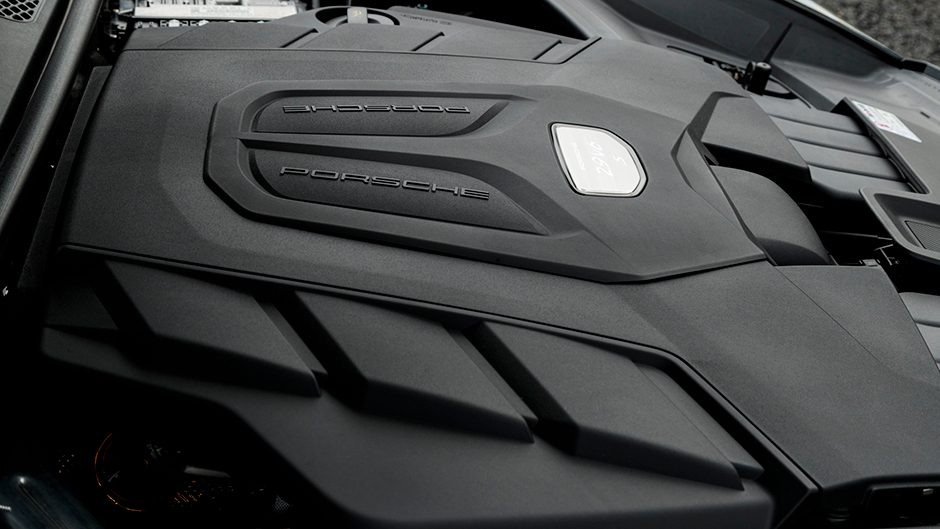
Porsche claims it’ll do 9.4L/100km on average, thanks in part to a new eight-speed auto. This features revised gear sets and a wider ratio spread, with a lower first gear, shorter steps to sixth, which is direct, while seventh and eighth are overdriven. It’s all slush and refinement in the Normal/European fuel test drive mode where it selects high gears to utilise the low end torque when commuting. It will coast along in neutral to conserve juice too, while the stop/start system has the engine conking out before you’ve even come to a halt.
This eco-ness is neutered in Sport, easily selected via the wheel-mounted drive mode switch. And optional is the Sport Chrono Package with all the usual extras, including the Sport Response button for a 20-second burst of crazy, and launch control in the Sport Plus mode. Configured thus, Porsche claims a 0-100km/h time of 4.9sec, achieved easily. When massaged along, the shift programming is bang on in the Sport Plus mode, holding gears during throttle lifts, and changing down under braking, while the engine response improves further.
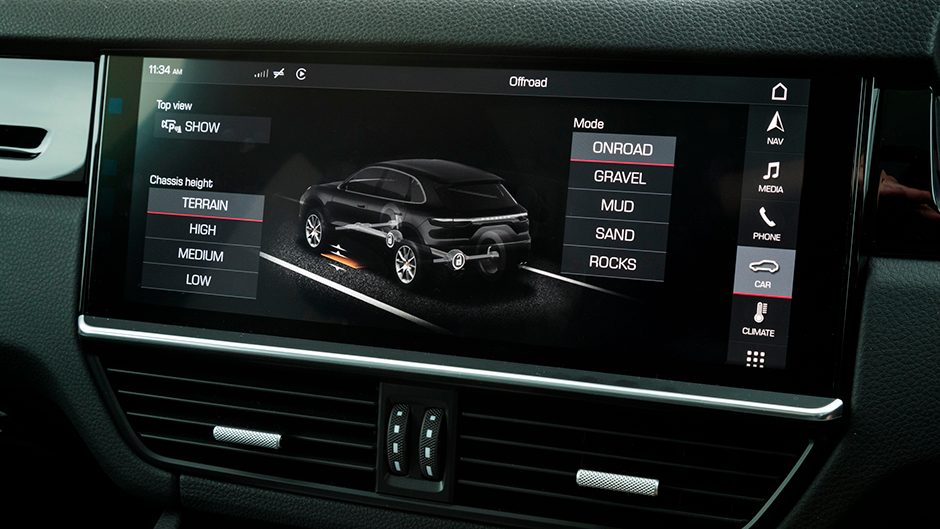
Porsche’s variable AWD spends most of its time sending urge to the rear. When traction is required the electronically controlled multiplate clutch system sucks the drive forward to help it scamper off the curve. But then as quickly as it is summoned, the drive is flowing rearward again to deliver what feels like an exceptionally tractive rear-drive set-up.
Porsche has replaced the double wishbones with what it’s calling an aluminium multilink design and a new alloy subframe that it says reduces weight and shores up the front end. A multilink rear features aluminium forged links, and on the Kiwi Cayenne S air springs are standard. This new air system is a so-called three-chamber design which delivers a wider range of ‘spring rates’ for both added comfort and extra control in its stiffest Sport Plus setting. With constantly adaptive programming, Cayenne has a compliant yet controlled ride in Normal, while the two sport settings deliver the starch for added dynamism.
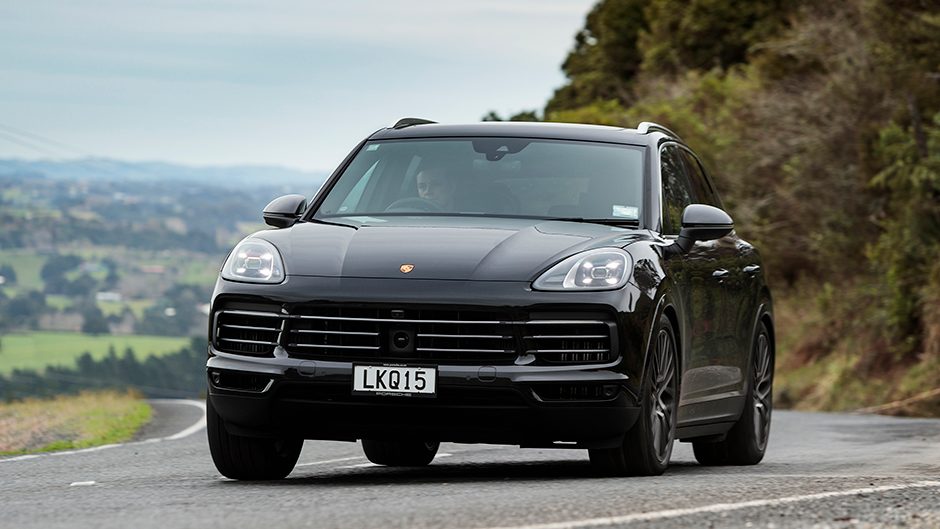
These new air springs are fast acting, keeping the Cayenne hunkered when its hurtling along, the Sport setting lowering the overall ride height. Sport Plus brings even more resilience to roll, though starts to transmit the bumps too. Sport is about right for a blast, with enough control but also more compliance to float over the big bumps. There are varying ride heights as well with ground clearance able to be ramped up to 245mm in off-road mode and it can sink down to 162mm on the Sports setting. All the chassis systems are now overseen by one central controller called 4D Chassis Control which makes for quicker and more precise decision making.
To make sure it steers right, Porsche has stiffened up the hardware for added response while the programming for the assistance is Porsche specific for the optimal feel. The result is a Cayenne that turns sharply, pointing about quickly and accurately. The resistance accumulates progressively as you push ever harder trying to scrub those tyres, and there’s little in the way of corruption, all the bumps filtered, yet the feel flows through. And there’s little need to chase adjustment midcorner, it’s so planted and stable through the bends.
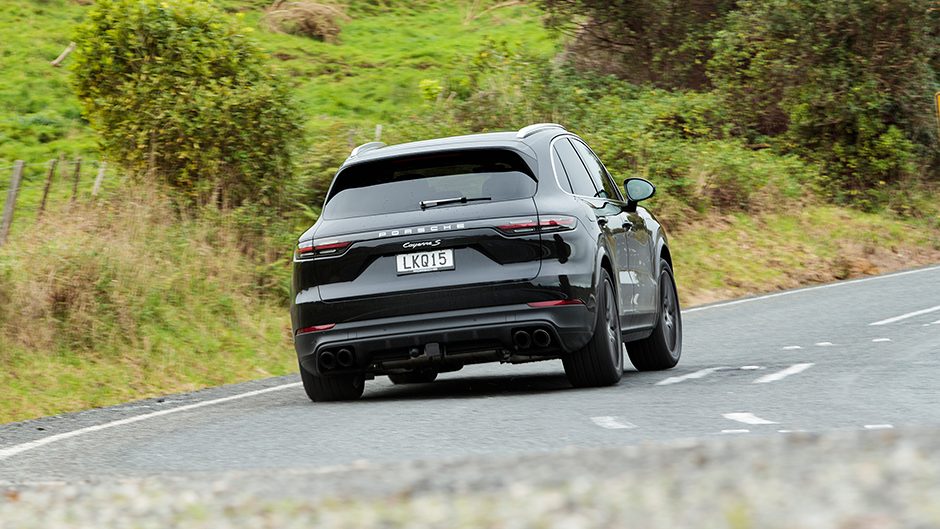
Cayenne now wears asymmetric tyres with the widths ranging from 255 to 285 on the front and 275 to 315s on the rear, depending on the wheel diameter. Ours was fitted with optional 21s, and so with 285/35 P Zeros on duty up front and 315s on the rear, it has grip to burn, yet the tyre roar is well subdued. The new S gets a brake upgrade, front rotors up to 390mm in diameter, which deliver power, stamina and a good feel under foot. If you think the standard package needs improving, additional dynamic enhancers include rear wheel steering, torque vectoring, and active roll control.
There’s really nothing awry with the way this sport ute goes. It’s a bit thirsty under the pump, and requires 98, but it’s a performance turbo with a big load to lug, and for the usual commuting duties expect somewhere between 10 to 14L/100km.
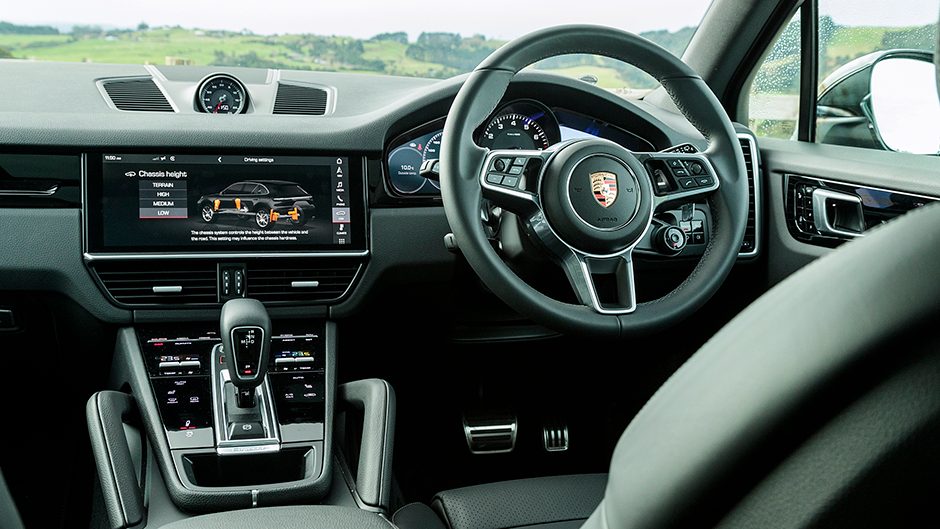
While the exterior styling hasn’t changed markedly, the interior sure has, adopting the layout first seen in the Panamera. Gone are all the switches, and switch blanks, replaced by haptic glass panels, while the big new touchscreen also handles some of the car functions. This has a vibrant display and is controlled by the usual flicks and swipes. It’s flush with functionality and connectivity, but not if you’re of the Android persuasion; it only supports CarPlay.
The new gear lever is a shift-by-wire design that looks slick though doesn’t always select Drive the first time when shifting it from Reverse. And the Park button isn’t ideally located, but is automatically selected when you switch the engine off. While everything is well made, the plastic dash and door tops don’t align with the price asked, and so buyers will need to pay yet more for the extended leather packages.
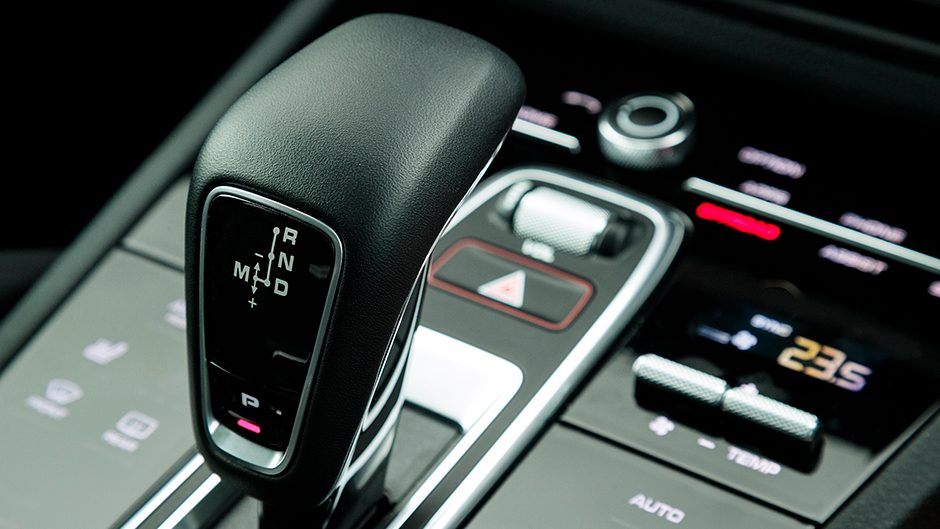
But Porsche buyers are conditioned to spend up, this example with $20k of extras like the $3500 asked for the active cruise (which adds the unsightly radar sensor in the front grille) and even proximity key functionality is a further $2250.
Porsche has added some extra versatility in the rear with a reclining, sliding seat which offers commodious lounging and is easily folded over to extend boot space, which is quoted at 770L, but that’s obviously with stuff piled high. It’s a wide hold, and reasonably long too. Couple it with a 3500kg tow rating, and this really does it all very well.
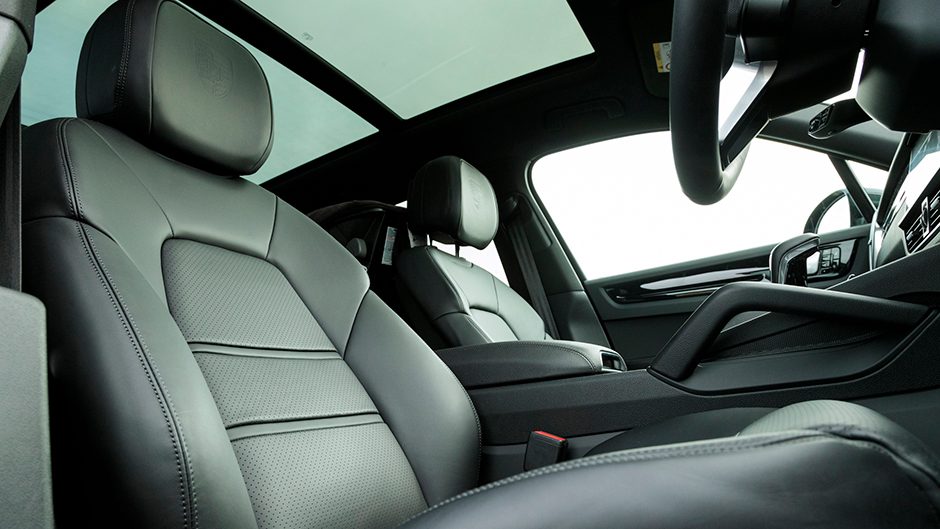
If you can justify the price, Cayenne’s never been better.
| Model | Porsche Cayenne S |
| Price | $187,800 |
| Engine | 2894cc, V6, T/DI, 324kW/550Nm |
| Drivetrain | 8-speed auto, all-wheel drive |
| Fuel Use | 9.4L/100km |
| C02 Output | 213g/km |
| 0-100km/h | 4.95sec |
| Weight | 2193kg |


